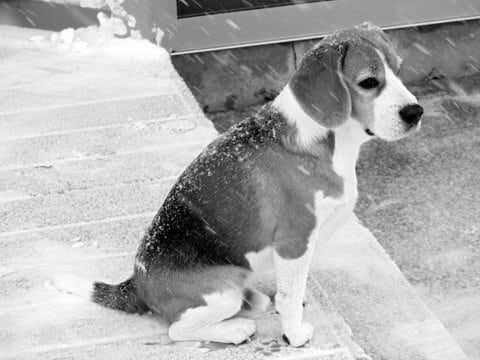Home » Meet The Breeds » Beagle » Page 2
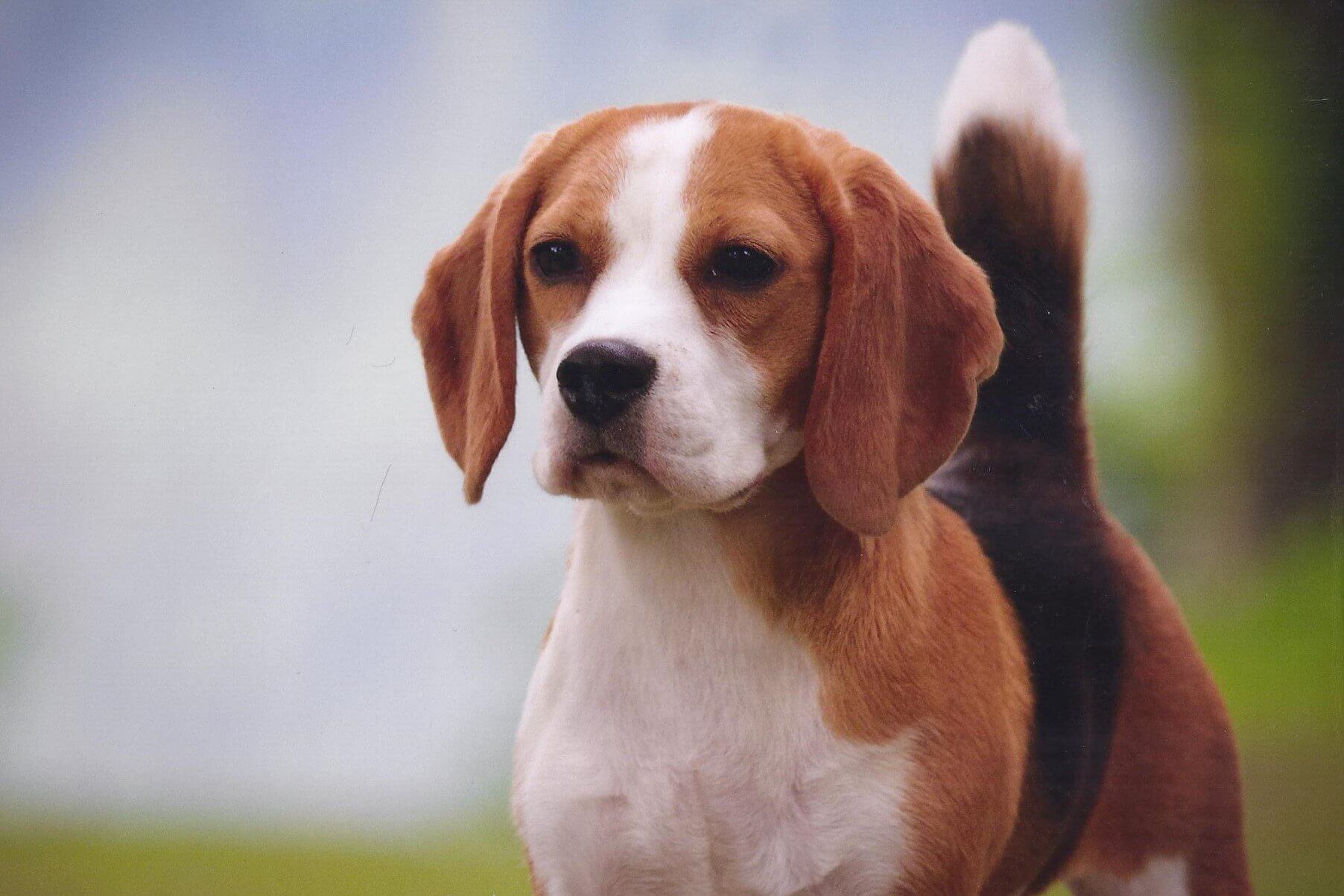
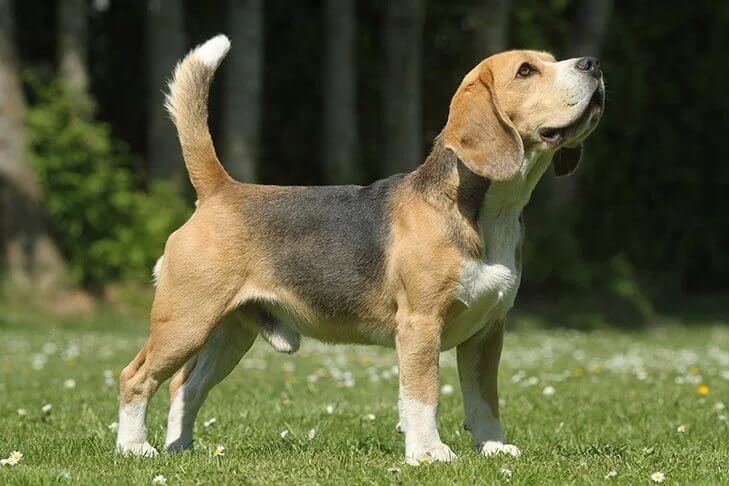
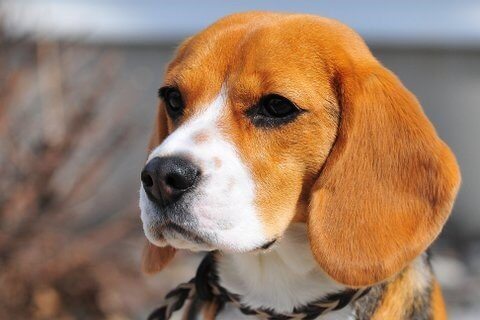
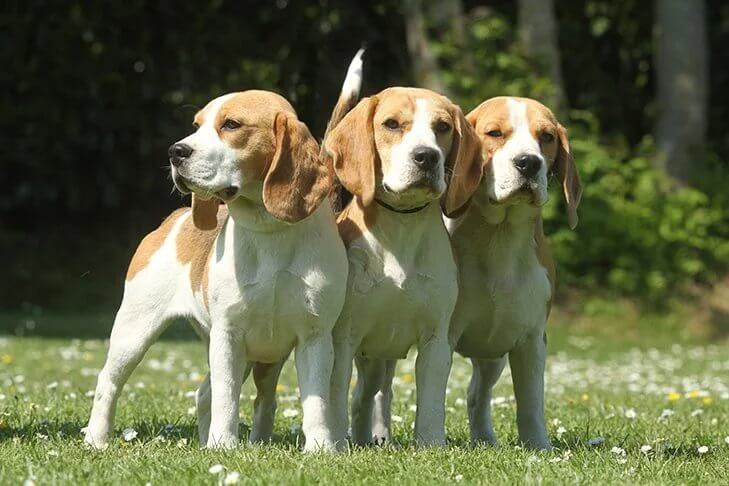
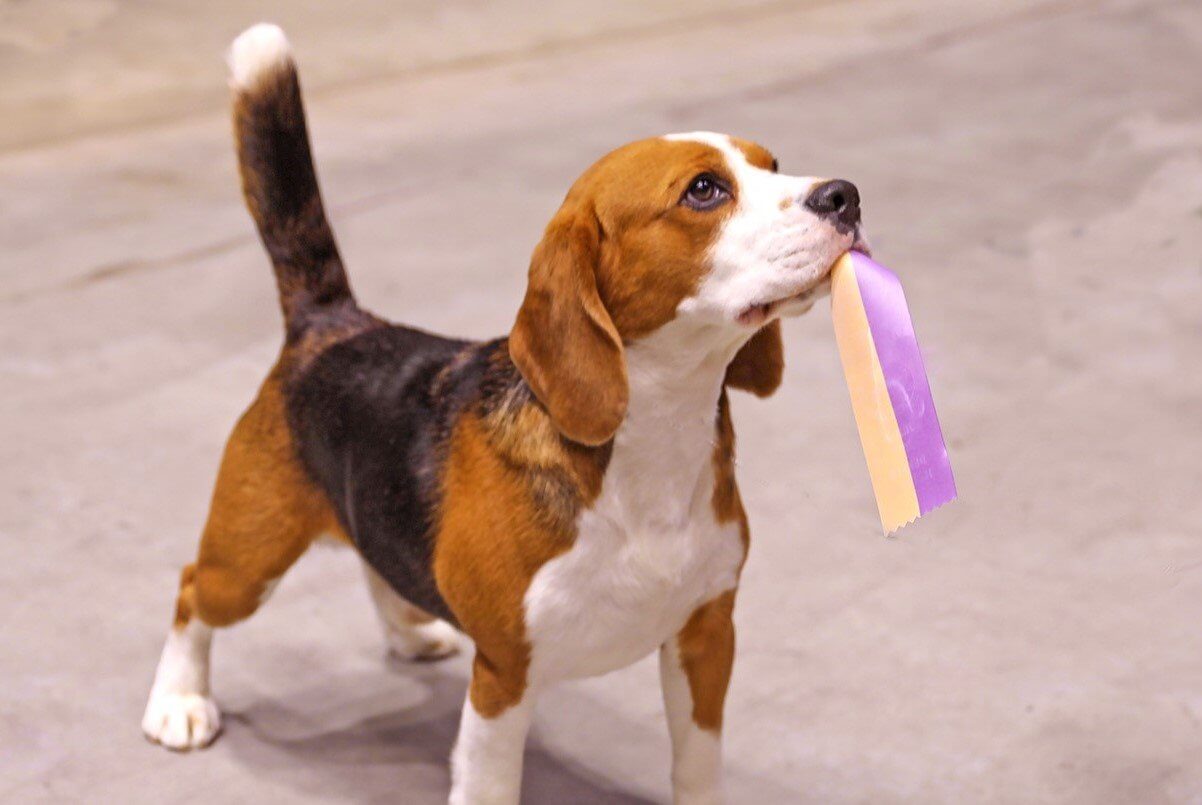
The delightful and determined Beagle is a small, compact, and hardy hound, appreciated by so many for its playful demeanor and soulful expression. Acknowledged by hunters for its keen sense of smell and exceptional tracking abilities, the Beagle’s origins are thought to trace back to ancient Greece and Rome. Traditionally used for hunting hare, the breed has since transcended the role to become a capable detection dog, a star in the show ring, and a popular choice as a family companion.
Hound
13 – 15 Inches
under 30 Pounds
10 – 15 Years
| Country of Origin | England |
|---|---|
| Bred For | Pack Hunting, Companionship |
| Known For | Friendliness, Playfulness, Hunting in Packs |
| Popularity | High |
| Temperament | Curious, Friendly, Merry |
| Activities | Hunting, Conformation Shows, Dog Sports, Running, Swimming |
The Beagle’s origins can be traced back over 2,000 years to Ancient Greece. Writings from that period mention small hound dogs used for tracking and hunting, and while it’s debatable if these dogs were the direct ancestors of today’s hounds, they certainly share much in common. The Romans brought small hounds with them to England which were crossbred with local dogs, producing what may be recognized as the early Beagle. By the reign of Queen Elizabeth I, pocket-sized hounds, known as “Elizabethan Pocket Beagles,” were popular in the royal courts.
The name “Beagle” is believed to have been derived from the Old French word be’geule, referring to the baying voice of the hounds when on the hunt. Another theory is that it originates from the Gaelic word beag, which means “little,” emphasizing the breed’s small size.
The modern Beagle owes its development primarily to breeders in the 19th century, when Reverend Philip Honeywood established a breeding program in Essex, England. His main objective was to produce dogs with excellent hunting skills, though not necessarily with a consistent look. Thomas Johnson later refined the breed, focusing on enhancing its appearance without compromising its hunting abilities.
During the 1840s, Beagles were introduced to the United States where they became popular as pack hunting dogs. The American Kennel Club (AKC) officially recognized the breed in 1885 and as its popularity steadily grew. By the mid-20th century, the Beagle had become favored as a household pet. And although many still partake in hunting rabbits and hare, many more excel as companions and as Therapy Dogs or airport Detection Dogs.
The Beagle is easily recognized for its small stature, muscular frame, and pleading expression that resonates a gentle alertness. The breed’s short coat, straight tail, and moderate size paint a picture of a hound that’s both functional in the field and lovable in the home.
Beagles are categorized in two size varieties; those under 13 inches and those between 13 and 15 inches.
Adult male Beagles typically stand less than 13 inches tall at the shoulder or between 13 and 15 inches tall, with females measuring within the same range.
Males can weigh from 20 to 30 pounds for the 15-inch variety and under 20 pounds for the 13-inch variety. Females typically weigh slightly less.
The Beagle’s body is slightly longer than it is tall, with a well-balanced and rather substantial appearance for its size. A compact body, combined with plenty of bone and good muscling, grants the Beagle its signature beauty and utility. The breed’s ribs are well spring and the chest is deep, extending down to the elbow, thus ensuring good lung capacity—essential for its role as a tracker and pack hunter. The overall impression is one of a quality hound that’s built for stamina and endurance in the field.
Texture: The Beagle’s coat is short, dense, and hard, providing protection from brambles without becoming entangled. It is weather-resistant and allows for a fair amount of wear-and-tear.
| Standard Color | |
|---|---|
| Black Red & White | ee |
| Red Black & White | ee |
| Red & Black | ee |
| Black | ee |
| Red | ee |
| Lemon | ee |
| Blue & White | ee |
| Brown | ee |
| White | ee |
| Tan | ee |
| Black & White | ee |
| Black Tan & Redtick | ee |
| Black Fawn & White | ee |
| Blue | ee |
| White Black & Tan | ee |
| Blue Tan & White | ee |
| Black & Tan | ee |
| Black Tan & Bluetick | ee |
| Black Tan & White | ee |
| Black White & Tan | ee |
| Brown & White | ee |
| Brown White & Tan | ee |
| Lemon & White | ee |
| Tan & White | ee |
| Red & White | ee |
A Note About Color: The Beagle can be any true hound color. The color combinations include 10 distinct colors (in various shades) and six possible markings. A puppy’s coloration commonly changes (or “breaks”) with the emergence of the adult coat. A white tail tip is quite common and increases the hound’s visibility in the field.
| Standard Marking | |
|---|---|
| Ticked | ee |
| White Markings | ee |
| Brown Markings | ee |
| Tan Markings | ee |
| Black Markings | ee |
| Spotted | ee |
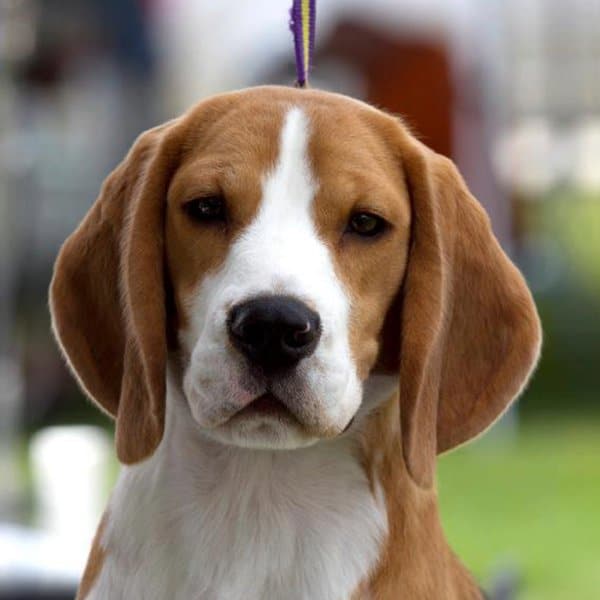
The Beagle’s tail is one of the breed’s more noteworthy features. It is sturdy, set somewhat high on the croup, and moderately long. Straight or just slightly curved, the tail should not have a pronounced hook or twist. Instead, there is often a characteristic white tip. Often referred to as a “flag,” this feature enhances the Beagle’s visibility in tall grasses and heavily wooded areas.
Sharing life with a Beagle can be a lot of fun, but it’s essential to understand the breed’s unique characteristics and needs so that everyone can enjoy spending time together. This breed, known for its keen sense of smell, requires specific care and attention both outside and indoors.
Lifespan: On average, the Beagle has a lifespan of 10 to 15 years. While many factors contribute to a dog’s longevity, this breed tends to be relatively long-lived when provided with good care and room to run in a safe environment.
While the Beagle is generally a robust breed, it is not exempt from certain health risks. Awareness and early detection are key to managing or preventing these issues:
Regular contact with the Beagle’s breeder and routine veterinary check-ups are vital for the early detection of these and other potential health concerns.
The Beagle possesses a personality that is often described as merry. Known for its loving nature, this breed is exceptionally social and typically enjoys the company of both people and other animals. Consequently, the average Beagle doesn’t always enjoy being left alone and can suffer from separation anxiety or become easily distracted by its strong sense of smell. While energetic and playful, this breed is generally tolerant and easygoing too. In a household with other dogs, the Beagle usually fits right in. Its gentle and patient temperament generally makes the breed a good companion for young children as well. And when meeting strangers, the Beagle is neither aggressive nor shy. Instead, this breed will often approach new people with a friendly greeting in the form of a wet nose and a wagging tail.
A Beagle’s size, age, activity level, and metabolism all play a role in determining each dog’s dietary needs. A growing puppy needs food that’s specially formulated for growth or “all life stages.” And since puppies typically need to eat more frequently, three or even four meals a day should be provided during the initial growth phase. As the Beagle transitions to adulthood, its feeding routine will also change. An adult usually does well enough on two meals a day. Typically, an adult may consume about one to one and a half cups of high-quality dry food daily, divided into two meals. Being a breed with a keen sense of smell, the Beagle can have a notorious appetite. This enthusiasm means owners must be mindful not to overfeed their dog. Overfeeding can lead to obesity, which poses a range of short- and long-term health risks.
Training a Beagle is both a rewarding and a challenging endeavor. The breed’s intelligence and eagerness to please can make training sessions fun; however, the Beagle’s innate curiosity and strong sense of smell can sometimes lead it to become easily distracted. Patience and consistency are key, and positive reinforcement techniques work particularly well with this happy breed. The Beagle can be taught commands and tricks with relative ease, but it can also learn bad habits quickly. For example, the breed can be particularly vocal, especially if left alone for extended periods, so early training can be needed to manage unnecessary vocalizations. Additionally, if it a Beagle catches a scent, it can become fixated and may not respond to a recall command. It’s therefore recommended to always have the dog on a leash or in a secure area when training opr playing outdoors.
Exercise is fundamental for a Beagle’s physical health and mental well-being. As an active and curious breed, these hounds thrive when provided with regular opportunities to expend their energy and indulge their inquisitive nature.
| Energy Level | High |
|---|---|
| Exercise Requirements | 2 Hours/Day (Minimum), Daily Walks, Regular Exercise, Vigorous Running, Playing with Another Dog, Mental Stimulation |
The Beagle typically possesses a moderate to high level of energy. This means daily physical activity isn’t just a luxury; it’s a necessity. This hound enjoys a good romp and can display bursts of energy, especially during play. It is equally content with steady-paced activities like long walks or hikes. These outings easily cater to the Beagle’s physical needs and can provide ample sensory stimulation, giving the breed’s keen sense of smell a stimulating workout. However, when engaging in outdoor activities, it’s crucial to remember that the Beagle’s nose is its guiding force. To prevent the dog from being led astray, secure play areas and leashed walks are essential.
The Beagle’s short, dense, and weather-resistant coat provides some natural protection against the elements; however, this doesn’t mean regular grooming can be overlooked.
| Coat Type | Close, Hard, Medium Length |
|---|---|
| Grooming Requirements | Weekly Brushing, Occasional Bathing, Routine Ear Cleaning, Periodic Nail Trimming, Regular Tooth Brushing |
Although the Beagle is not considered a heavy shedder, these hounds do shed consistently throughout the year. Regular brushing, about once a week, can help to manage any coat loss and will also distribute the skin’s natural oils, promoting a glossy coat with a healthy sheen. Bathing a Beagle doesn’t need to be a frequent activity, as the coat naturally repels dirt to some extent. However, occasional baths, especially when the dog gets particularly dirty or starts to have a noticeable doggy odor, can be beneficial. Additionally, it’s advisable to regularly clean the ears to prevent any waxy buildup. And, to prevent discomfort and potential injury, nail trimming should be a necessary part of the Beagle’s weekly grooming regimen.
The affectionate and amiable Beagle can infuse a home with boundless energy and plenty of charm. Since the breed isn’t overly large, these dogs can comfortably reside in smaller spaces; however, regular walks and play sessions are non-negotiable. Living with a Beagle means daily exercise sessions on-leash or in a secure yard or garden. It’s essential to supervise all outdoor interactions to prevent the dog from following its nose and wandering off in search of mischief. At any time of year, the Beagle’s coat will offer some protection from the elements. During cold spells, this hound will enjoy being outdoors for brief periods and will appreciate returning home to a cozy spot in the house. In warmer weather, a cool, shaded space and plenty of fresh drinking water is all that’s needed. It should be noted that because the Beagle is largely food-driven, trash bins and food storage containers must always be out of reach to avoid any dietary indiscretions.
The arrival of a litter of Beagle puppies is cause for celebration. These small, adorable, and curious pups have a penchant for exploration and an insatiable desire to play. From their soulful eyes to their tiny wagging tails, baby Beagles easily captivate and have just what it takes to command attention.
Caring for a Beagle puppy requires plenty of love, patience, and commitment. For catering to the little one’s developmental needs, it’s important to provide socialization and training as well as a high-quality puppy food that matches the pup’s specific nutritional requirements. Establishing a regular feeding schedule that prevents overeating, and regular veterinary visits that provide all the necessary vaccinations and deworming medications, will help to ensure healthy development throughout the puppy’s first year. Additionally, early socialization and brief training sessions will introduce the pup to a diversity of experiences and people, setting the stage for a lifetime of interactive learning. Safety during these enriching activities is paramount, so providing the Beagle baby with a puppy-proof environment will protect it from household hazards such as electrical cords, harmful plants, and small ingestible objects. And although a puppy can appear to have infinite reserves of energy, it also has the need for sleep. Striking a balance between active playtime and rejuvenating rest can help to establish a daily routine that will strengthen the connection shared between the puppy and its favorite people.
The Beagle is not only renowned for its charming appearance and companionable nature, it’s also known for its versatility. Many breed enthusiasts choose to engage their resourceful hounds in various activities that highlight their dogs’ adaptability and keen senses.
The Beagle is recognized by the world’s leading registries and kennel organizations, which categorize the breed into a specific Group based on its unique characteristics. This breed is recognized worldwide under the following Group designations:
| Organization | Group Designation |
|---|---|
| AKC (American Kennel Club) | Hound |
| UKC (United Kennel Club) | Scenthound |
| CKC (Canadian Kennel Club) | Hound |
| ANKC (Australian National Kennel Council) | Hounds |
| RKC (The Royal Kennel Club) | Hound |
| FCI (Fédération Cynologique Internationale) | Group 6 – Scent Hounds and Related Breeds; Section 1.3 – Small-Sized Hounds |
The ideal Beagle is described by a Breed Standard that is approved by each of the world’s leading registries and kennel organizations. The Breed Standards for this breed may be found in the following links:
| Organization | Breed Standard |
|---|---|
| American Kennel Club | AKC Beagle Breed Standard |
| United Kennel Club | UKC Beagle Breed Standard |
| Canadian Kennel Club | CKC Beagle Breed Standard |
| Australian National Kennel Council | ANKC Beagle Breed Standard |
| The Royal Kennel Club | RKC Beagle Breed Standard |
| Fédération Cynologique Internationale | FCI Beagle Breed Standard |
The National Beagle Club of America (NBCA) is the primary authority for the breed in the United States. Established in the late 19th century, the NBCA has been instrumental in setting the Breed Standard, organizing events, and fostering a community of devoted Beaglers. The club’s commitment ensures the breed’s continued popularity as well as its preservation for the future.
In Canada, the Beagle Club of Canada (BCC) is the main representative organization for the breed. The BCC actively promotes the breed’s interests, holding Conformation Shows, Obedience Trials, Field Trials, and other companion and performance events.
The United Kingdom has a rich Beagle history, and the Beagle Association (BA) is the leading entity in Great Britain that offers support for the breed. Established in 1966, the association and its members endeavor to promote all aspects of the breed, including its general health and its unique history.
Across the United States, Beagle Rescue, Education, and Welfare (BREW) is one of the primary entities committed to rescue and rehabilitation. This organization provides care for homeless Beagles, offering them a new lease on life. Through an extensive network of volunteers, BREW facilitates adoptions, foster care, and education about the breed.
In Canada, organizations such as Big On Beagles (BOB) Rescue focus on helping dogs, particularly older ones, find the caring homes they deserve. The group’s volunteers understand the unique needs of senior Beagles and strive to offer them a safe haven.
In the United Kingdom, the Beagle Welfare Scheme plays a pivotal role. The organization’s mission is not only to rescue and rehome Beagles, but also to educate the public on the breed’s specific characteristics and needs.
Yes, Beagles are generally considered good family dogs due to their friendly and sociable nature. They often get along well with children and other pets.
Yes, Beagles are frequently used as Detection Dogs. Due to the breed’s exceptional sense of smell, these little hounds can be especially useful for detecting the scent of drugs, explosives, and even certain diseases.
Beagles can form strong bonds with their families, and they are known to be sociable and friendly with multiple people. Their loyalty gets distributed rather than being limited to just one person.
Beagles are social dogs that can suffer from separation anxiety if left alone for long periods. While some dogs can tolerate being alone for a few hours, it’s generally not recommended to leave them to their own devices all day. They thrive best with companionship and interaction.
Beagles are known for their tendency to bark. They are typically vocal dogs and may bark at various stimuli, including strangers, other animals, and unfamiliar sounds.
Yes, Beagles are known for their distinctive howl or bay, which they use to communicate or signal their excitement and alertness.
Beagles can have a tendency to dig, especially if they are bored or following a scent. Providing them with adequate mental and physical stimulation can help to minimize this behavior.
Beagles have a strong sense of smell and a natural instinct to follow scents. This can sometimes lead them to wander if not properly supervised or contained. Fenced yards and leashed walks are important to prevent roaming.
Beagles can be skilled escape artists if they catch an interesting scent or spot something intriguing. Making sure their yard is secure, and supervising outdoor activities, can help to prevent any escapes.
Beagles are generally considered to be of moderate maintenance. They have short coats that require regular brushing but not extensive grooming. However, their need for exercise, mental stimulation, and companionship makes them moderately demanding in terms of time and attention.
The best way to ensure a long and happy relationship with a purebred dog is to purchase one from a responsible breeder. Not sure where to begin?
Contact the National Parent Club’s Breeder Referral Program, which is listed on the AKC Breeder Referral Contacts page.
